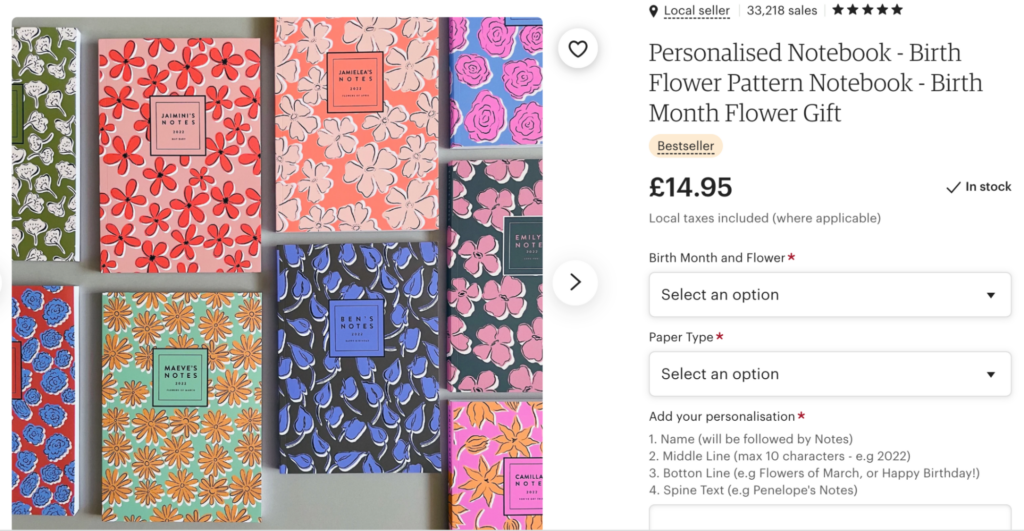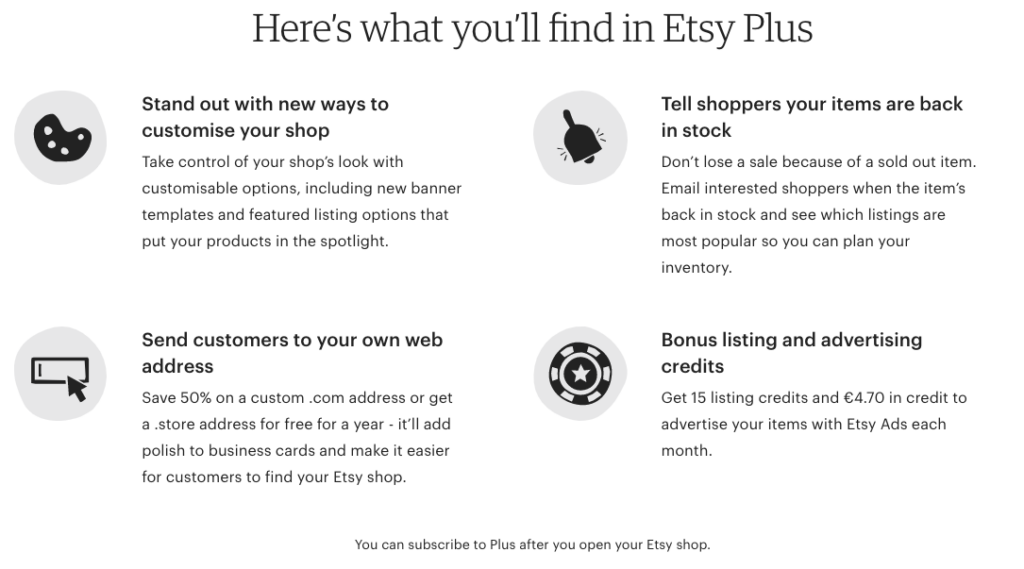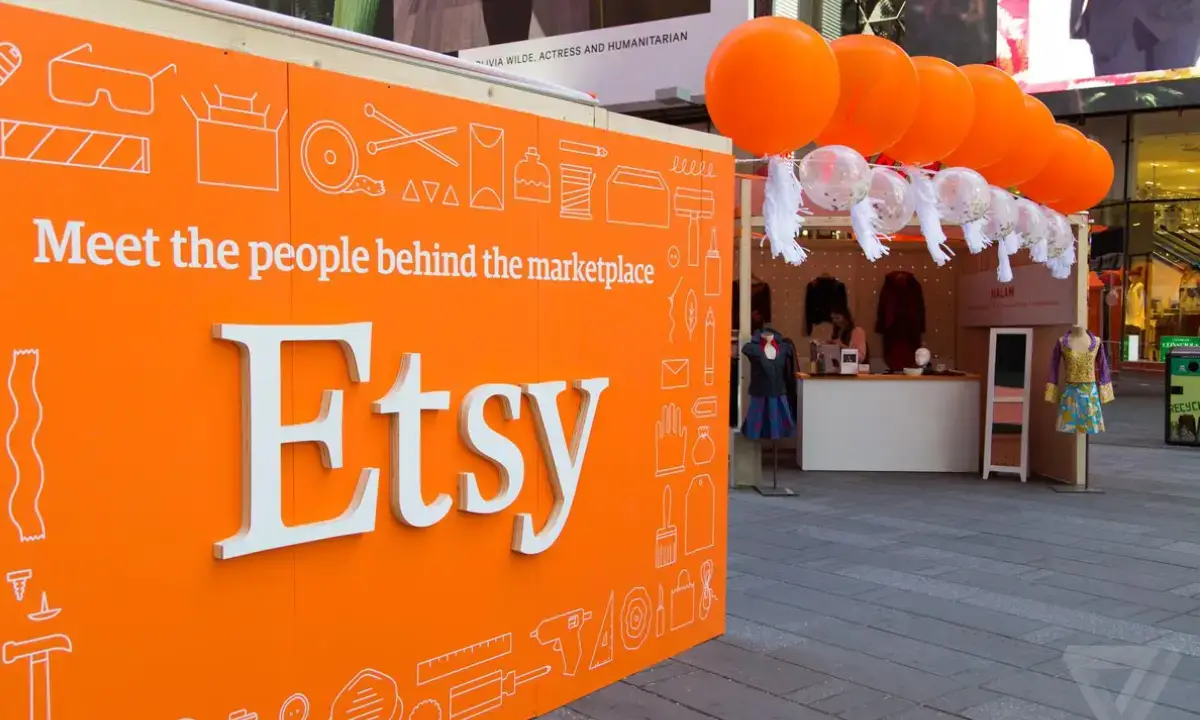If you’re an independent artisan, maker or a distributor of handmade, niche or vintage items, you may be wondering how to sell on Etsy. Alongside Amazon, eBay, and Walmart, Etsy is one of the most popular online marketplaces. However, Etsy sets itself apart from other eCommerce marketplaces because it specialises in offering only handmade, artisanal, vintage, and custom-made products.
Its ability to bring together these cottage-industry sellers offering unique and rare items is what has made Etsy a leading platform for arts and collectibles. Customers often look to Etsy as a source of unique inspiration for gift giving, and many browse Etsy specifically to find items that can’t be found via other online marketplaces.
Because many small businesses and independent artisans feature on Etsy, online shoppers trust Etsy as a place where they can purchase from small businesses, shop more locally and find items that are one-of-a-kind or not available anywhere else.
While Etsy is definitely not a marketplace for mass-produced items, it does include sellers who offer small runs of factory produced items. That said, many Etsy businesses are run by individuals and a staggering 95% are run from home.
This means that Etsy is an ideal option if you are a solopreneur looking for a place to sell your products.
By connecting your Etsy account to eDesk, you will get notified of customer messages in the form of tickets where you can assign it to agents, add SLA and order notes, and attach an order number so you can manage them directly within eDesk.
Want to get started with eDesk? Get started today and see how you can increase sales & customer satisfaction with eDesk.
Should you become an Etsy seller?
Etsy revenue for the twelve month period ending 31 March 2023 was $2.358 billion, a 15.11% increase year-over year. In 2021, Etsy saw 90 million buyers and hosted 7.5 million active sellers. Of those 90 million buyers, 36.3 million were repeat buyers, a 121% increase since 2019.
What’s more, 53% of all active Etsy buyers and 37% of new buyers who made a purchase in 2020 returned to make a purchase in 2021. More shoppers – returning and new – to Etsy means more opportunity for Etsy sellers.
If that’s not enough, Etsy just announced the launch of a new Payment Protection programme coming into effect in August 2023 for both buyers and sellers. This programme is designed to protect both parties against unforeseen circumstances. With this peace of mind, there’s no better time to become an Etsy seller.
Etsy revenue for the twelve months ending March 31, 2023 was $2.358B, a 15.11% increase year-over-year


Doing some simple maths using those numbers, it is clear that if you’re an Etsy seller, you have a massive opportunity to be seen by many buyers from around the globe. Of course, this ability to be seen has the potential to have a hugely positive impact on your brand and your sales volumes!
How to sell on Etsy
Becoming an Etsy seller is easy. There are three straightforward steps you need to take to sell your products on Etsy.
- Set up your Etsy account

The first step to becoming a seller on Etsy is to set up your Etsy account. You can do this by visiting the Etsy homepage, clicking Sell on Etsy and then clicking Open Your Etsy Shop. You’ll be guided through the process of creating your store’s settings, including setting your language, currency type and location.
Likewise, you’ll be able to select a store name here as well. This is where you can become creative, either using your existing company brand name or coming up with an entirely new, inspired brand name if it’s your first time selling anything. Whatever you end up choosing, the name of your Etsy store should be between four and 20 characters, without spaces or special characters.
2. Choose what type of Etsy shop you want
Once you’ve registered your shop, you’ll need to customise your shop preferences and settings to determine how you want your shop to look on the homepage and to function. Start by entering your shop language, country/location, currency, and shop name. Here are all the custom details you’ll want to be sure to enter:
- Shop name
As mentioned, you need to choose a name and include this when you set up your Etsy shop. You must choose a name that is less than 20 characters long and does not contain any spaces or non-alpha-numeric characters. Choosing the right name will impact your shop’s SEO, so do bear this in mind when deciding on a name. It should align with what you are selling. But don’t worry too much about making the wrong decision – Etsy allows you to easily change your shop name later.
- Shop title
The title of your shop differs from the name in that the title is a brief description of what your shop sells. The title should be informative and again, adhere to SEO considerations.
- External links
Here, you can link to external pages and social media links that allow you to promote your shop via socials. Sharing on social media websites like Instagram can also help because it can provide social proof of your products. For example, if you use your social platform to re-share pictures shared by satisfied customers who are using and reviewing your products.
- Message to buyers
This is where you can set up an instant message that gets sent to each buyer. This can be a thank you message, or an automatic coupon code for their next purchase.
- Shop announcement
You can include more detailed information about your shop, your listings, and what customers can expect when they shop with you.
3. Select your payment method
Once you’ve got your Etsy store all set up, you’ll need to decide which payment method you’d like to use and provide Etsy with your billing information for identification and authorisation purposes.
When it comes to payment solutions, you can offer your customers the ability to pay via PayPal or through Etsy Payments when they complete a sale with you. Etsy Payments is the most popular payment solution for those selling on Etsy, as it is easy to use and allows you to be paid in a number of different ways.
Etsy payments

Etsy’s payments allow your customers to use a variety of payment types including credit and debit cards, PayPal, Google Wallet, Apple Pay, and Etsy Gift Cards. If you choose to use Etsy payments, then be aware that there is a fee. Currently, this is a set rate plus a percent of the total sale price of the item. For example, £0.20 & 4%. The fees vary by country, so please check the official docs by Etsy for up-to-date fees.
4. Set your shipping fees
When setting up as a seller on Etsy, it’s also important to set appropriate shipping fees. You may want to consider factors such as whether you’ll be shipping your products only within your country, or also internationally to buyers in other countries. If so, you’ll want to make sure that differing shipping fees are accounted for, including duty and shipping processing time.
Once you’ve done all that, you can begin listing your products.
How much does it cost to become an Etsy seller?
In addition to all the benefits of being a seller on Etsy, perhaps best of all is that becoming a seller will cost you nothing at all. That’s right, setting up your Etsy account and opening a store is completely free!
However, you’ll pay £0.16 for each item you wish to list on the marketplace. For this £0.16 fee, your listing remains active for four months. Then, every time one of your items sells, you’ll pay a 6.5% transaction fee on the sale of the item and another £0.16 to re-list the remaining inventory of that product. This fee structure is in line with that of most other online marketplaces.
Payment processing on Etsy is painless as well: Etsy sets a payment processing fee of 4% plus £0.20 per transaction.
So, it’s easy to set up as an Etsy seller and get paid, but what about creating compelling listings to attract buyers?
How to write a great Etsy listing
Listing products on Etsy is a little different from other online marketplaces, in that there is only one listing for each type of product, even if that product comes in different sizes or colours. So, for example, if you’re selling handmade journals, all of which are identical but come in five different colours, you would only need to list your journal once on Etsy, with the various colour options.

Here’s how you can create an effective listing on Etsy:
1. Optimise your profile
Because so many people come to Etsy to purchase from artisans, makers and other craftsmen, customers will often be curious about you and your brand. You can use this to your advantage by building a compelling profile that actually tells the story of your brand!
Include a photo of yourself as the store owner and include a bio of up to 5,000 characters. It’s a good idea to take advantage of this, as including a store bio is a great way to connect with your customers. It can show them who you are as a brand, the values you stand for, and the “why” or passion behind your business. You’ll create a positive connection with potential customers and build credibility as a seller.
You can also share your brand’s social media links here too, allowing potential customers to engage with your brand even further.
Make sure you complete your store bio, you have 5,000 characters available to write something really compelling.
2. Choose the right images
Select high-quality photos of your product, taken against a neutral, bright background. Etsy advises sellers to have a minimum of five product photos, so follow that advice! Using a sufficient number of photos in your product listing is especially important if you are selling unique or custom-made goods, as it allows buyers to get a good look at the product detail.
Also, don’t forget to make sure that your thumbnail pictures are sized correctly, and have a consistent look and feel. The thumbnail photo is the first image a customer will see when they reach your product listing.
3. Inventory quantity and price
Make sure you accurately list the quantity you have in stock, as well as different colours, sizes or other product specifications. When pricing your product, don’t forget to take into consideration all the costs associated with selling your product, from advertising to shipping costs. It’s important you don’t compromise your profits.
4. Marketing
The Etsy seller app is very useful and allows you to manage your listings from your phone. Etsy also provides a suite of tools for sellers, these are available via an Etsy plus subscription

5. Preview your Etsy store
After you’ve done all of this, the final step is to preview your Etsy store before going live. You’ll want to look at it from the perspective of a customer to make sure everything looks right. Once you’re satisfied with the preview, you’re ready to sell your first product.
Understanding Etsy search relevancy
In addition to writing a great listing, one area you really want to be mindful of is how the Etsy search works. Etsy uses both query matching (matching a customer’s search query against listings that match that query) and ranking (where listings are ranked on a number of different factors).
In addition to this, Etsy uses context-specific ranking (CSR) technology, which helps it show shoppers relevant listings based on insights into consumer shopping habits across Etsy.
Query matching and ranking are both critical to how your listing performs against buyers’ search keywords. As such, it is important to understand the role that SEO (search engine optimisation) plays in allowing you to increase the visibility of your product in search.
This may appear complicated, but remember that while every eCommerce platform has its own SEO techniques, there are some general best practices that can be helpful in improving the SEO of your Etsy store.
A key way of doing this is by determining the category that your products fit best on Etsy, and then using the right keywords to attract customers and stand out against your competitors.
Etsy allows sellers to “tag” each product. Using these keyword tags appropriately and strategically is a great way to make sure your listing comes up in the keyword searches.
You can also pay to promote your products and receive an advertising boost on the marketplace – and you don’t need a huge budget to do so. The lowest price point for advertising on Etsy is just $1/day and works on a cost-per-click (CPC) basis, meaning that you pay every time someone clicks on your promoted listing.
When you promote a listing, it will appear in the search results before your competitors’ items. So, going back to our handmade journal product example, if you paid to promote your journal listing, then any time a potential customer enters keywords such as “journal” into the Etsy search bar, your product listing will appear ahead of the unpaid listings for journals. This can certainly help boost the sales of your product.
Tactics for increasing sales for your Etsy listings
Once you’ve got your Esty shop up and running using the above tips, you’re ready to make sales! You will absolutely make some sales organically – meaning you won’t need to do much other than optimise your listing as mentioned above. However, if you are looking to grow your business and increase your store’s sales potential, here are some additional tactics you can employ to help make your sales go from good to great.
- Promote your listings using social media
Social media can be a powerful way to promote your business. Showcasing social media posts from satisfied customers can help you gain credibility with potential customers. For example, if you sell jewellery on Etsy, then re-sharing an Instagram post of a happy customer wearing one of your jewellery pieces can be powerful proof that your products are high-quality and satisfactory. Instagram and Pinterest are your best bets when it comes to social media, as they are both highly visual and have useful search/discovery capabilities.

- Uplevel your listing with professional photography
There’s no doubt that professional photography can make a massive difference in how people perceive your products. The exact same product photographed professionally can look much higher-quality, simply because the lighting, background and camera angles are well-placed. While it’s possible to take good DIY pictures using just a smartphone, investing in professional product photography will always give your listings a boost.

- Optimise your pricing
When you price your items in your Etsy listing, you want to make sure you are staying in line with competitors’ prices, without undercutting your own profit margin. That is why it’s important to stay on top of market trends and fluctuations.
For example, all of a sudden, an item you’re selling might become the top-requested gift of the festive season. In this case, you’ll definitely want to increase prices to keep up with market demand – but not so much that you’ll lose sales to a competitor. Similarly, if a product you’re selling starts decreasing in market demand, you’ll need to lower prices accordingly.
Other market conditions such as the cost of materials to produce an item, should also factor into the equation. Pricing should be an ongoing issue that you pay attention to and adjust as market conditions change.
- Understand the Etsy algorithm
A huge benefit of being on Etsy is the sheer number of potential customers active on the site. As a seller, you have the opportunity to reach so many people who can benefit from your products! But you still need to make sure that you get in front of the right customers.
This is where keyword optimisation and understanding how SEO works, particularly with regards to Etsy’s search engine, are crucial. You’ll want to use the keywords that your ideal customers are using in their Etsy search queries.
Etsy helps its sellers out by providing an overview of its algorithm, and there are also numerous videos and blog posts available online authored by seasoned Etsy sellers.
Final thoughts
If you’re a smaller business, or a solopreneur with a product that is unique, artisan or quirky, Etsy is the perfect place for you to consider listing your products. You’ll reach a large, highly targeted audience without having to make a huge monetary commitment and can potentially integrate with other platforms too. Sign up is easy, and you’ll be joining a dynamic and unique eCommerce marketplace as a seller.

